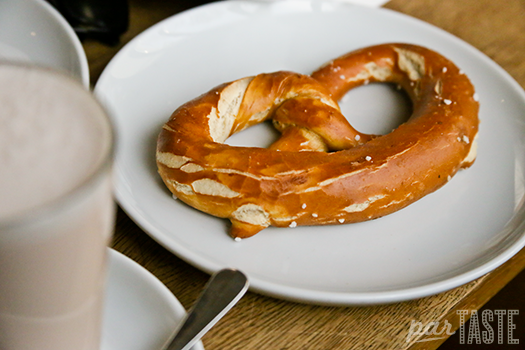The German brezel, or brezen in Bavarian, enjoys indisputable popularity among the breads of the world and is usually found in the form of a laugenbrezel, or lye pretzel. The laugenbrezel gets its characteristic brown color and crisp, glossy outer crust from a sodium hydroxide bath prior to baking. Brezeln are so common in Germany that they sometimes come standard in a basket or on a stand at the table, ready to eat. Just keep in mind that these brezeln are not free; before you get your bill, you will be asked if you had any and, if so, how many. When you find brezeln like this, they are usually accompanied by a small tub or two of mustard. Although mustard and brezeln pair together famously, Germans also enjoy their brezeln with butter, obatzda or in place of sandwich bread, paired with savory fillings.
If you really feel like indulging, try a type of brezel called butterbrezel – basically a butter sandwich made with a halved laugenbrezel. The variety of ways in which Germans enjoy brezeln is astonishing. During Octoberfest in Munich, you can find giant wiesnbrezn with a soft texture and light crust. For a more savory option, try a käsebrezel, topped in a layer of crispy cheese. For New Years, there are neujahrsbrezeln, a sweet variety of brezel that symbolize luck and happiness, are ornately decorated, dressed with pearl sugar, almonds or marzipan and can be over three feet wide. On Palm Sunday and during lent you’ll find the hefebrezel, made with an egg dough, raisins and sugary icing. For an ultra sweet brezel, be on the lookout for puddingbrezeln, with puff pastry dough, vanilla custard baked into the empty rings of the brezel and a glazed sugar coating. No matter which type of brezel satisfies your cravings, we recommend you eat lots of them while you have the opportunity, no other country makes these twisted doughy treats quite like Germany.

